Research Areas
Cosmogenic noble gas paleothermometry
Isotopes of helium and neon are produced in common minerals like quartz and feldspars through nuclear interactions with cosmic ray particles. Helium and neon also experience thermally-activated diffusive loss in these minerals at Earth surface temperatures. We utilize the production-diffusion systematics of these noble gas-mineral pairs to quantify the temperatures rocks have experienced while they’ve been exposed at Earth’s surface to cosmic rays. Ongoing work involves use these surface thermal histories of rocks to understand how local climates have varied in the geologic past, as well as when landscapes transitioned between different thermo-erosional regimes. Recent projects have involved applying cosmogenic noble gas paleothermometry to understand changes in mountain snowpack in the last few hundred years, both in the Swiss Alps and the Colorado River headwaters. We are also applying cosmogenic noble gas paleothermometry to infer temperatures in Antarctica during the mid-Pliocene Warm Period, the last time atmospheric CO2 concentrations were comparable to today.
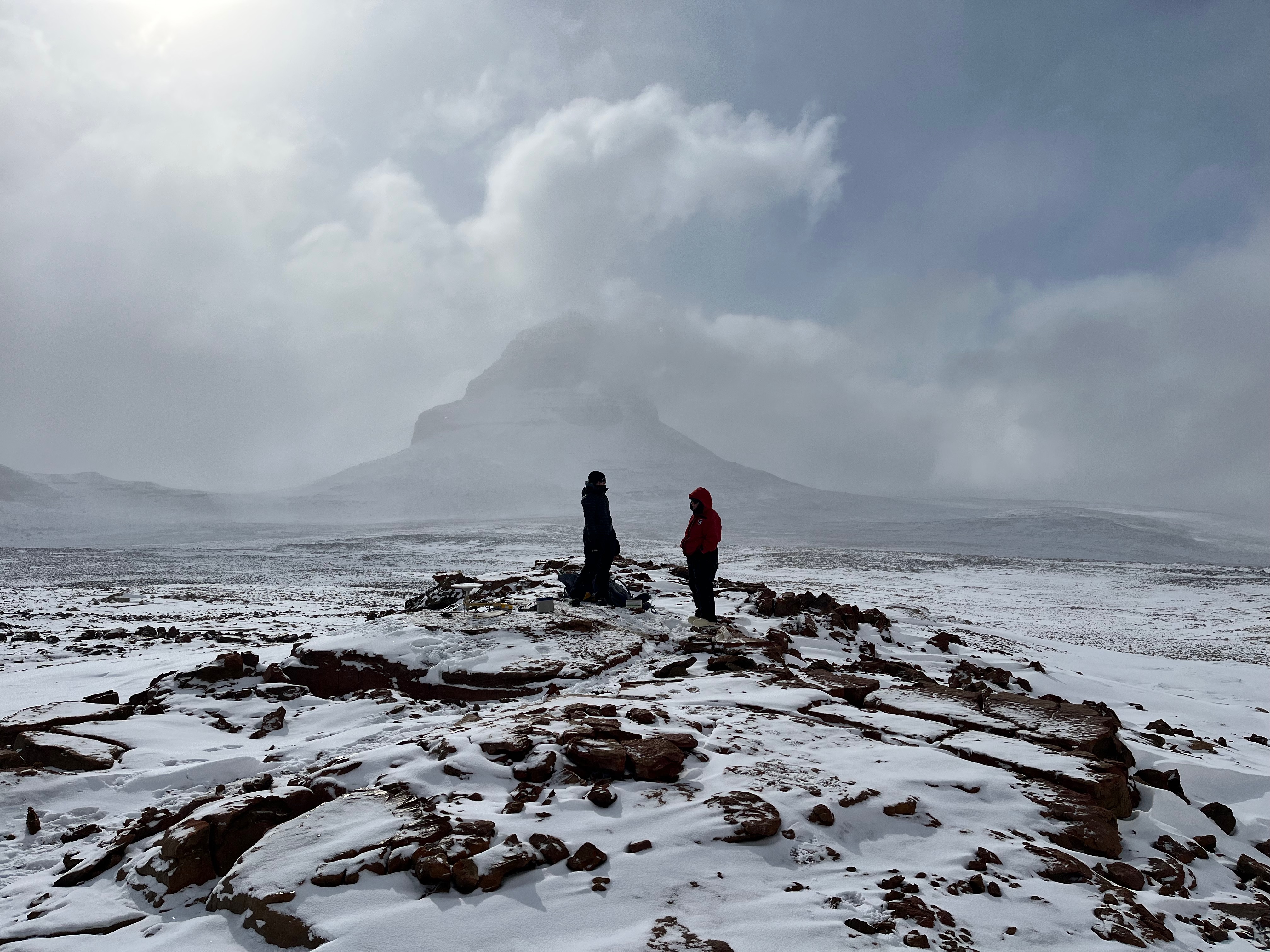
Collecting bedrock samples for cosmogenic noble gas paleothermometry in the Western Olympus Range, McMurdo Dry Valleys, Antarctica, November 2022.
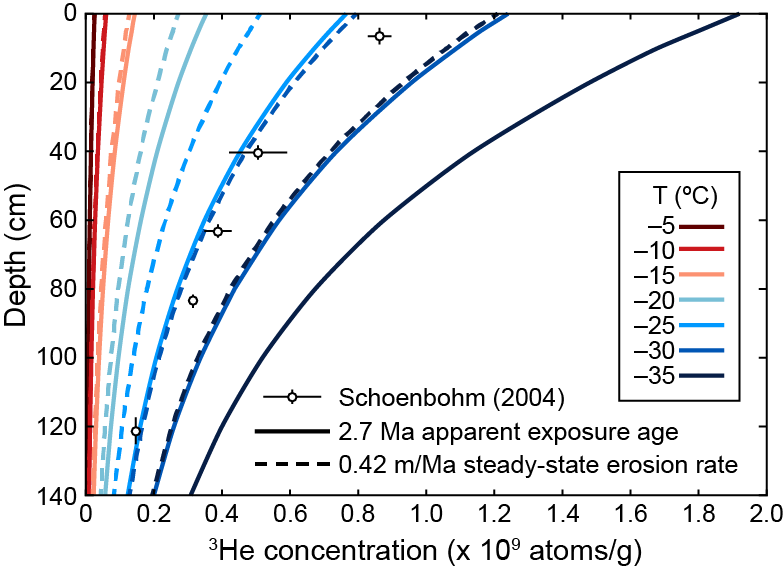
Depth profile of cosmogenic 3He in a bedrock core from the Dry Valleys, Antarctica, compared to model depth profiles for different simple thermal histories. Data are from Schoenbohm (2004).
Tectonics and geomorphology
Our group uses noble gas thermochronology, in particular apatite 4He/3He, apatite (U-Th)/He, and zircon (U-Th)/He, as well as cosmogenic nuclide geochemistry, to study the interaction of tectonic and geomorphic processes in a variety of geologic environments. Ongoing work involves studying the exhumation histories of regions affected by hot spot magmatism as well as regions affected by oceanic plateau collisions. Recent work includes studying the evolution of topography and rivers in southern Tibet.
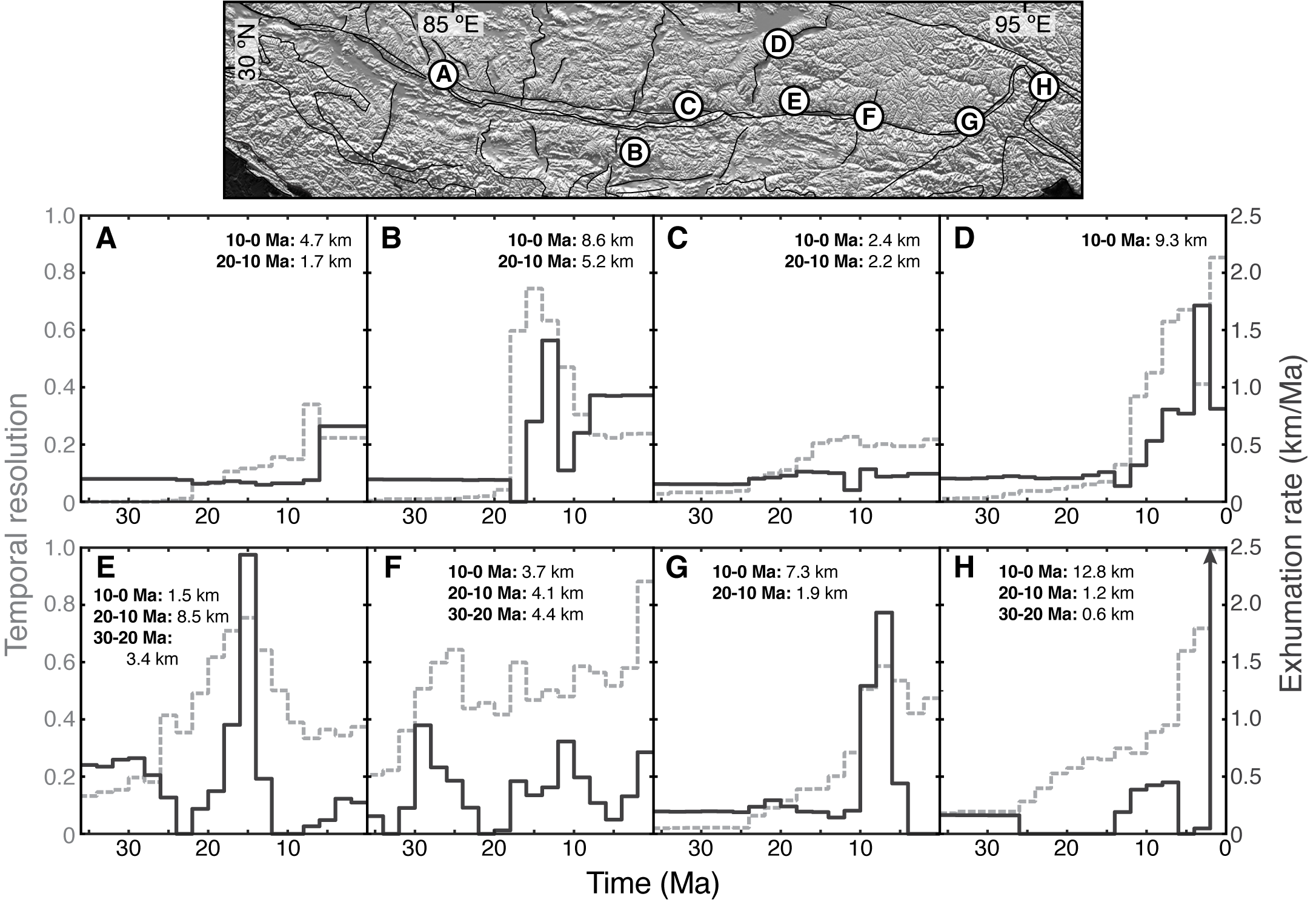
Exhumation rates trhough time at select locations in the southern Tibetan plateau, inverted from a large compilation of thermochronometry data.
Thermochronology of planetary materials
Through a combination of sample characterization, noble gas measurements, and numerical modeling, our group studies processes that affect the thermal histories of planetary materials, including impact events, space transit, and aqueous alteration. Ongoing work includes determining the age of alteration minerals in Martian meteorites, reconstructing the thermal histories of E chondrites, and modeling how impact events shape the distribution of geochronological information of planetary surfaces through time. We are also studying the geochronology of several terrestrial impact craters.
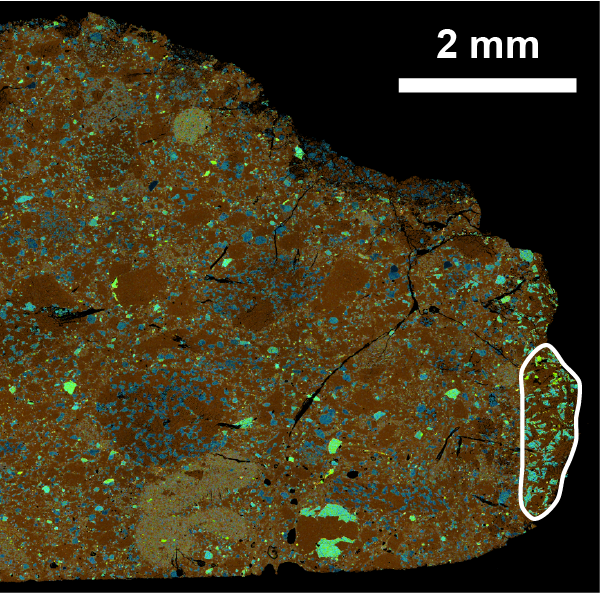
Backscattered electron image of lunar meteorite NWA 11444 with a compositional overlay from energy-dispersive x-ray spectroscopy. Orange = Al, Blue = Mg, Green = Fe.
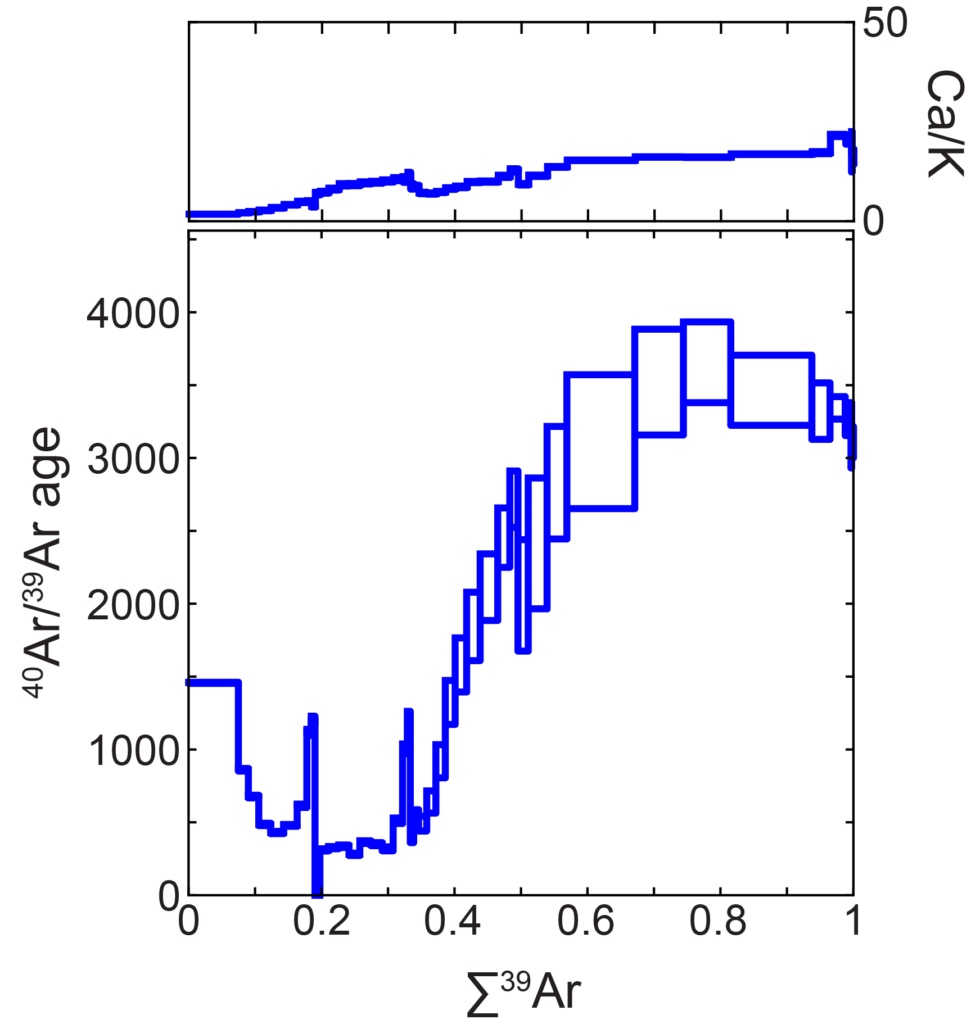
Example of an 40Ar/39Ar dataset from lunar meteorite NWA 11444, collected from the circled clast in the BSE image on the left.
Processes and rates in volcanic systems
Our group is studying the dynamics of volcanic systems as well as the interactions of magmatism with the Earth’s climate system, both in Earth’s recent geologic past and in deep time. On recent timescales, we are part of a large collaboration with geochronologists, geomorphologists, and glacier and magmatic system modelers investigating the relationships between subduction zone magmatism and the cryosphere. Specifically, our team is studying how changes in surface loading, driven by both changes in ice sheet extent and the redistribution of mass by glacial erosion, influenced the dynamics of magmatic systems in the Andean Southern Volcanic Zone in Chile in the last 50,000 years, across the last deglaciation. Over deeper geologic time, we are bringing new insights into the role that large igneous provinces have played in driving global change by quantifying the duration of hiatuses in the Deccan Traps using a combination of cosmogenic helium and paleomagnetism observations.
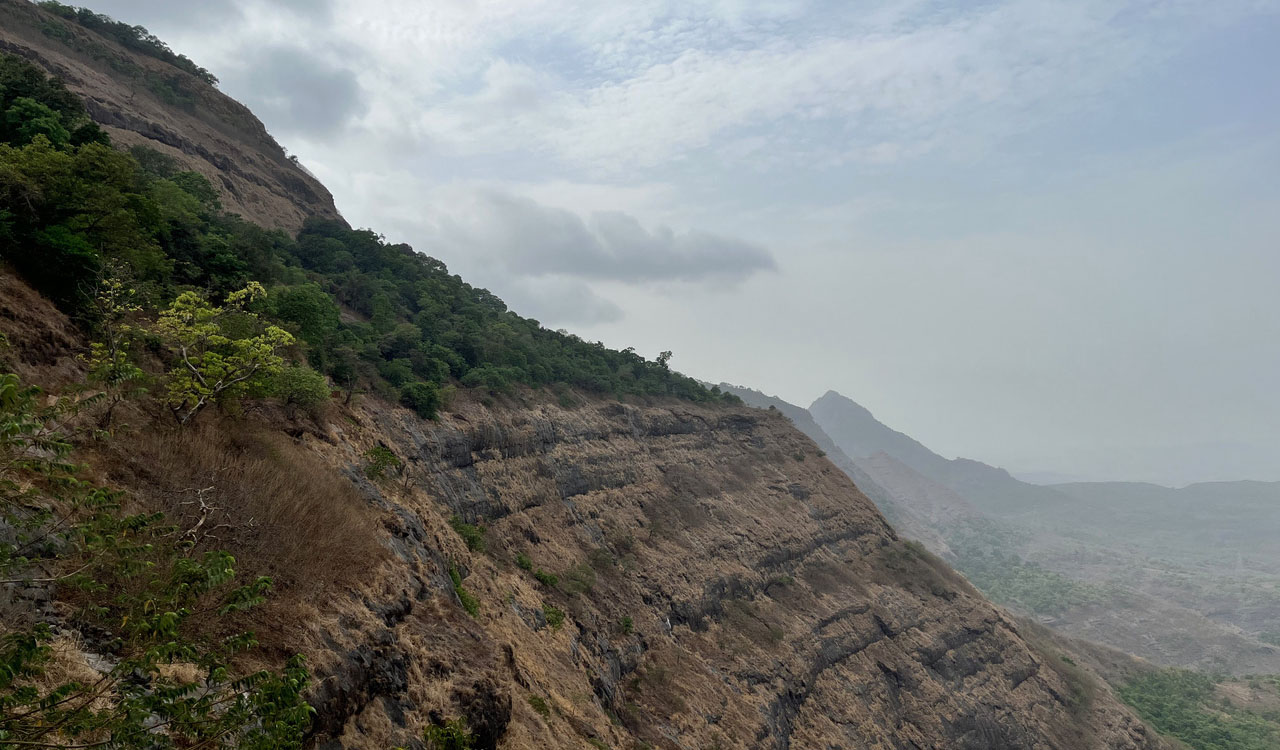
View of lava flows in the Deccan Traps large igneous province, India, from fieldwork carried out in May 2022.
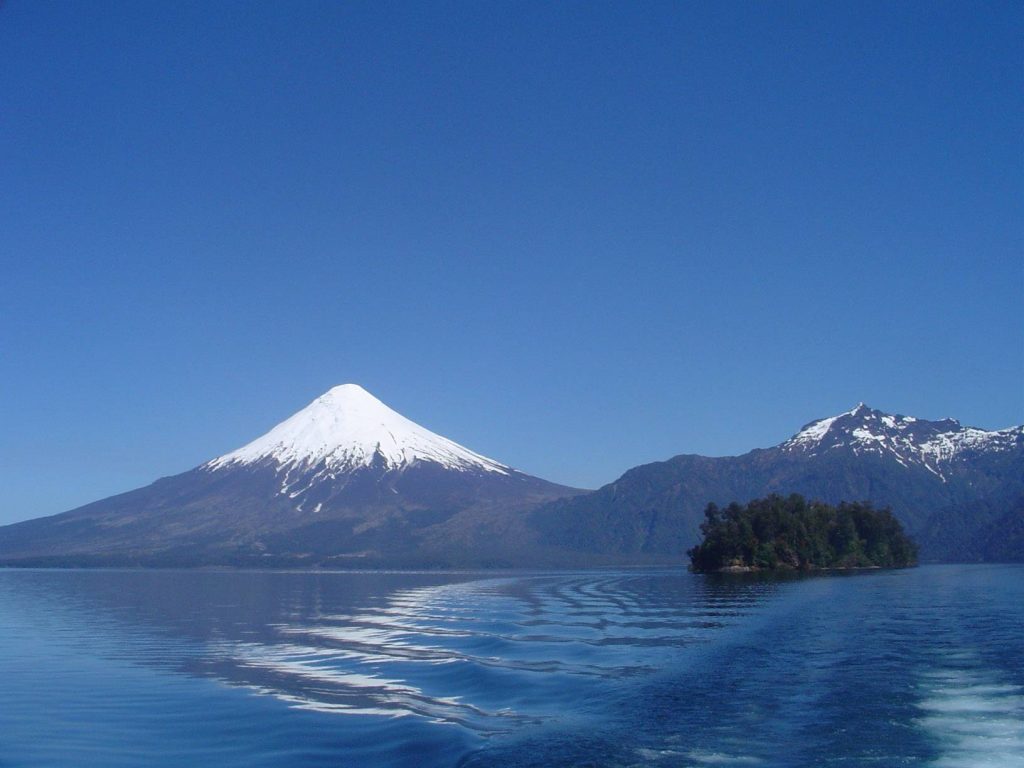
Osorno Volcano in the Andean Southern Volcanic Zone. Credit: Lilli Freda (distributed via imaggeo.egu.eu)
Noble gas diffusion kinetics
All of the applications of noble gas geochemistry that our group uses rely on knowledge of the kinetics of noble gas diffusion. We study the mechanisms and rates of noble gas diffusion in a variety of minerals using a combination of systematic laboratory experiments and density functional theory (DFT) calculations. We also conduct basic research on noble gas geochemistry in minerals to develop new thermochronometric tools. Ongoing research includes studying the role of defects in modulating helium diffusion in quartz through coordinated laboratory experiments and DFT calculations, as well as exploring the use of gar fish scale bioapatite for (U-Th)/He thermochronology.
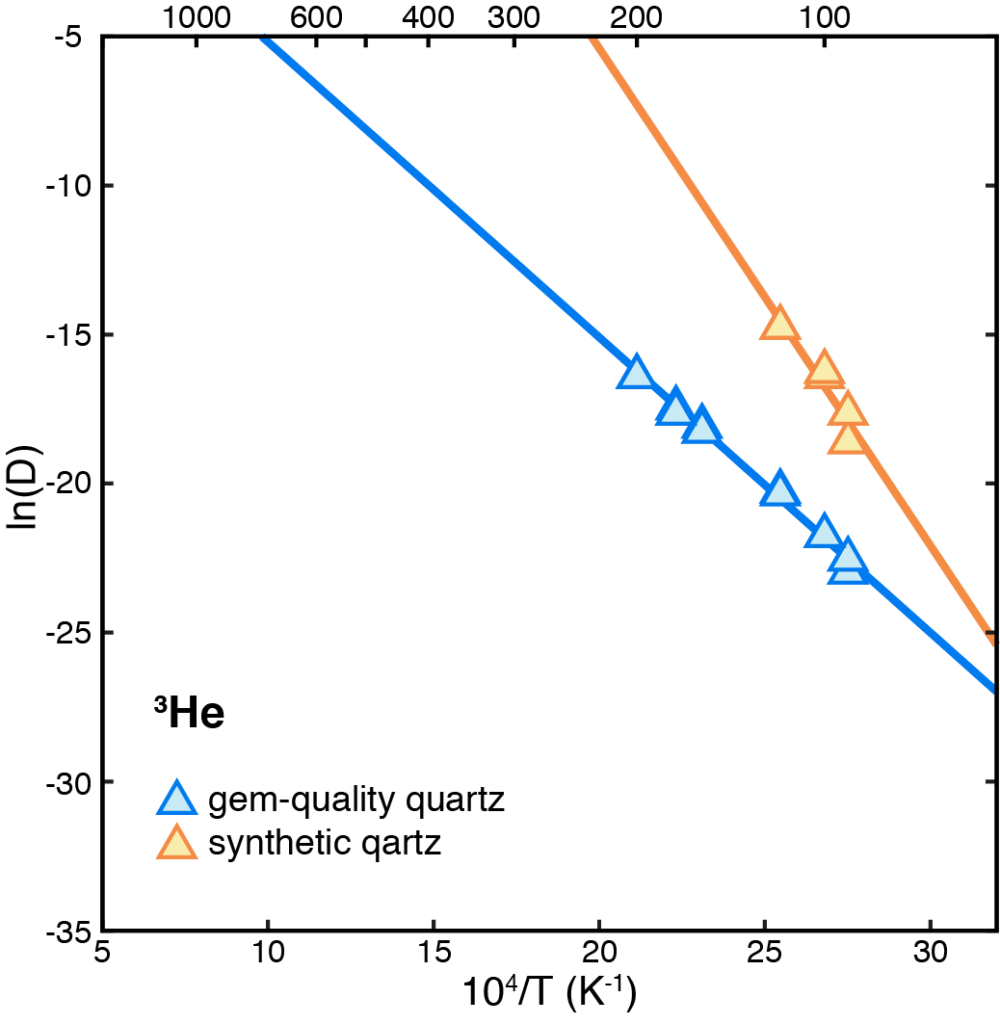
Arrhenius plot comparing helium diffusion kinetics in gem-quality quartz (blue) and synthetic quartz (orange).
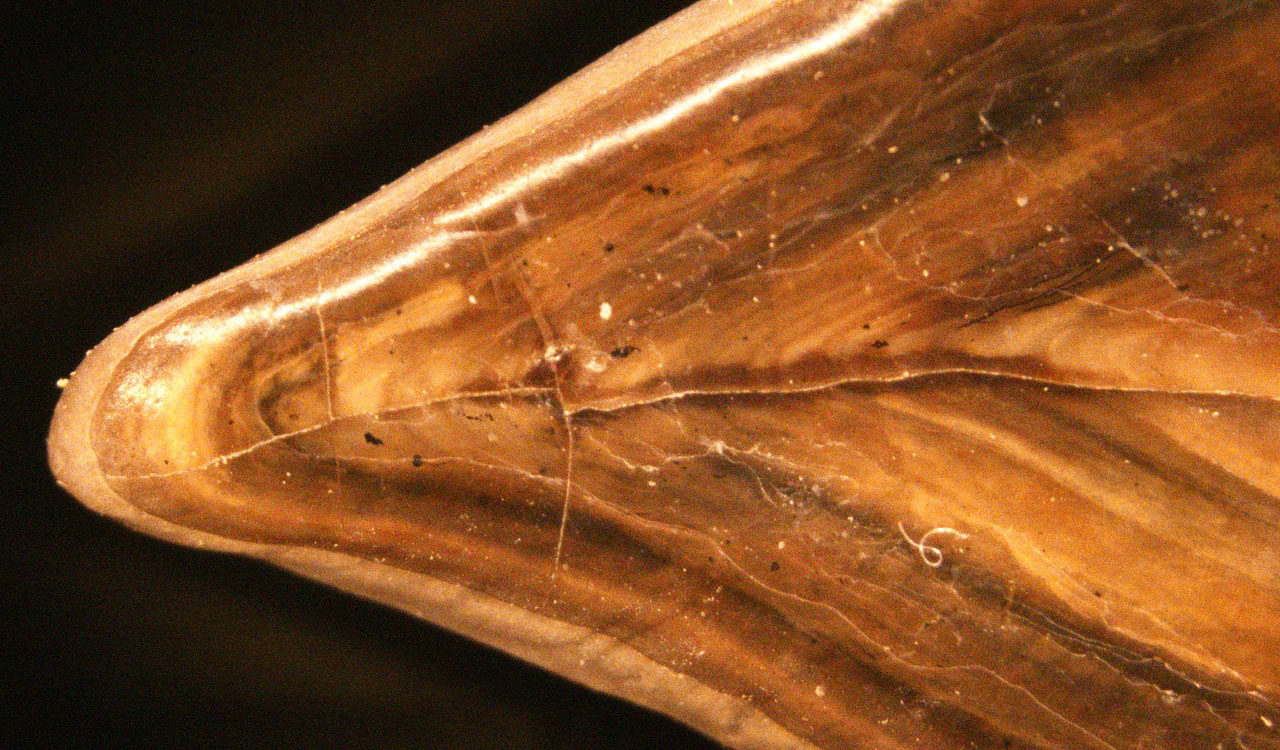
Light image of gar scale bioapatite from the Williston Basin. Both the shiny ganoine coating and underlying bone material that make up the gar scale can be seen.